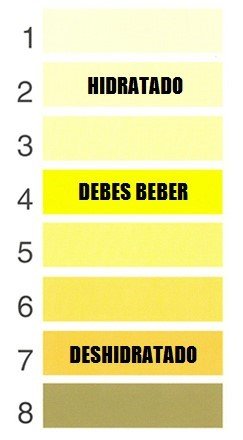The weather, outdoor spaces, vacations, free time, sharing with family and friends are those sensations that summer brings us and that can become the ultimate motivation to go out to exercise, but heat and exercise Summertime can be a risky combination. We share 10 tips to enjoy summer exercise safely.

Tips for Safe Exercise During Summer
There is nothing better in summer than going outside, but to exercise safely in the hot summer sun there are some guidelines to consider.
If you have a medical condition and / or take prescription drugs, ask your doctor if you need to take any extra precautionary measures.
1. Avoid the hottest part of the day
Get up early in the morning or go out at dusk or later. In the midday heat (usually between 11 a.m. and 5 p.m.) the risk of dehydration increases. Hydrate regularly and look for paths or spaces in the shade.
2. Wear light-colored and light clothing
Dark colors absorb heat, which can make you feel like you’re wrapped in a blanket. Heavy, tight clothing will also warm you up. Select light clothing, it will be able to circulate more air through the skin and keep you cool.
3. Apply sunscreen, with a high filter
Physical exercise in the open air generally has direct exposure to the sun. Among the most common problems are sunburn. Photosensitivity caused by certain medications can also occur.
In the long term, sunburn increases the risk of premature skin aging and increases the risk of skin cancer. Another good way to reduce the impact of the sun is to exercise with a cap or head covered. Apply a tall sunscreen, and reapply at hourly intervals, even if it’s sweat and waterproof.
Check that your sunscreen has a sun protection factor of at least 30, which represents the level of protection that sunscreen provides against UVB rays. Sunscreens 30 filter about 97% and Sunscreens 50 filter about 98%.
4. Hydrate with intelligence
Exercising in hot weather raises your body temperature. Our body’s natural cooling system can begin to fail if we are exposed to high temperatures for too long.
To stay hydrated, the ACSM recommendations indicate drinking 5-7 ml / kg of water 4 hours before training, 600-1200 ml / h of drink (which may include sodium, potassium and carbohydrates) during training and reestablishing hydration after -Training with the usual foods and drinks.
5. Eat for moisturizer
Eat fresh food and fruits. If it is already good to take them throughout the day, it is essential to do it before going out to practice sports. It is best to take fruits such as watermelon or melon, which contain carbohydrates and especially water, without overdoing it. For example: before going for a run, it is ideal to have a couple of melon slices with a little water. And the same after the activity, since in addition to recovering fluids, they also provide us with vitamins and minerals.
Have a handful of nuts before exercising. They provide a lot of energy and a lot of fiber.
After practicing sports it is important to drink water and isotonic drinks. As well as juices, carbohydrates and a little protein.
Milk is also a great option after exercise, better skimmed, since it contains macro and micro nutrients essential to recover.
It is important that the drinks are cool, but not cold, since otherwise they will not be absorbed properly.
6. Track hydration levels
A good way to know that you are hydrating properly is by checking the color of your urine. If it is pale yellow, you are very hydrated. If it is darker, it indicates that you have to drink more.
It must also be taken into account that some medications and supplements alter the color of the urine, so that this indicator, although it is good for many, does not work for everyone. To be safe, drink 250-300 ml of water for every 20 minutes of activity.

7. Don’t drink to excess
Drinking too much water, called overhydration, can lead to hyponatremia (low blood sodium). To stay hydrated, drink during and after exercise and other physical activities. At other times of the day, drink when you’re thirsty.
8. Listen to your body
Many days it kills us not to finish training. Listen to your body. If during training you have any of the following sensations, it is time to stop or make a change in training.
- General weakness
- Dizziness
- Muscle ramps
- Nausea or vomiting
- Quick heartbeats
Always remember that even a 20 minute workout has positive health effects.
9. If you feel weak and / or sick, stop immediately
Sit in the shade, drink water and eat something, preferably with a high water content.
10. Know the symptoms of heat stroke
Heatstroke is a serious and life-threatening threat. Symptoms include:
- Elevated body temperature (+ 40º)
- No sweat, hot, flushed, or red / dry skin
- Rapid pulse
- Trouble breathing
- Confusion
- Disorientation
Sometimes there is little warning, especially among athletes who train in hot and humid conditions, and among children and older people.
Jordi Notario
Director DIR OUTDOOR
Find your favorite activities in clubs or at fresh air, i enjoy an active summer.
REFERENCES
Von Duvillard, S. P., Braun, W. A., Markofski, M., Beneke, R., & Leithäuser, R. (2004). Fluids and hydration in prolonged endurance performance. Nutrition (Burbank, Los Angeles County, Calif.), 20(7-8), 651–656.
Marcos, A., Manonelles, P., Palacios, N., Wärnberg, J., Casajús, JA, Pérez, M., Aznar, S., Benito, PJ, Martínez-Gomez, D., Ortega, FB, Ortega , E., & October, R. (2014). Physical activity, hydration and health. Hospital Nutrition, 29 (6), 1224–1239.
Judelson, D. A., Maresh, C. M., Farrell, M. J., Yamamoto, L. M., Armstrong, L. E., Kraemer, W. J., Volek, J. S., Spiering, B. A., Casa, D. J., & Anderson, J. M. (2007). Effect of hydration state on strength, power, and resistance exercise performance. Medicine and science in sports and exercise, 39(10), 1817–1824.

